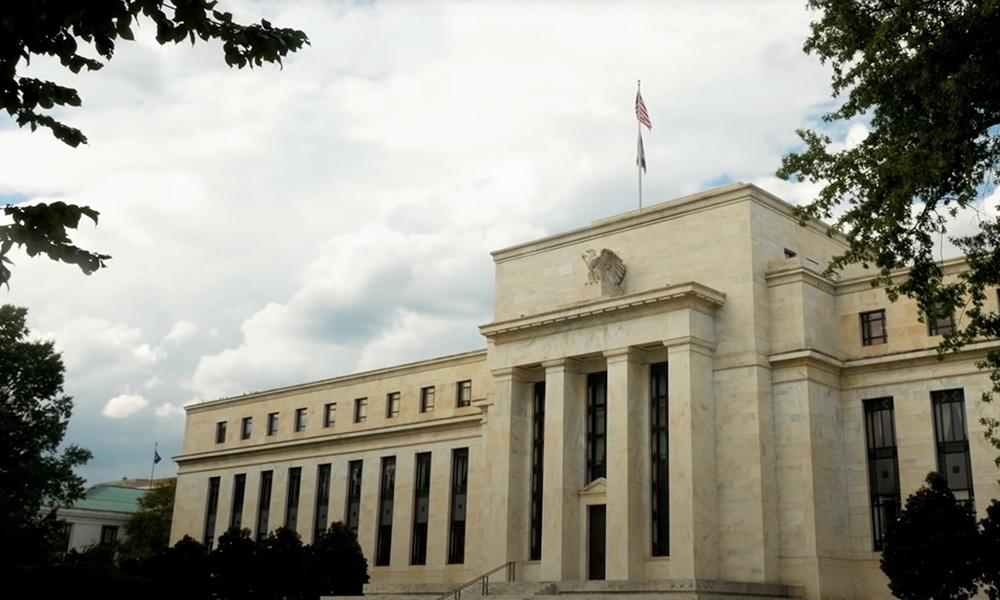Fed officials weigh in: Will the pace of interest rate cuts slow or accelerate? Economic indicators spark heated debate!
2025-10-10 11:25:28

The Fed’s path to rate cuts: proceed cautiously or make decisive adjustments?
Williams supports further rate cuts, warns of slowing job market
In an interview with The New York Times on October 9, John Williams, President of the New York Fed and Vice Chairman of the Federal Reserve, made it clear that he supports the Fed continuing to cut interest rates through 2025 to respond to the possible further slowdown in the job market.
As a permanent voting member of the Federal Open Market Committee (FOMC), Williams's views have a significant influence on the Fed's policy direction. He pointed out that the current slowdown in the job market does not mean that the economy will immediately fall into recession, but the Fed needs to balance the dual risks of inflation and the job market by cutting interest rates.
Williams expects that if economic data meets expectations—inflation rises slightly to around 3% and unemployment rises modestly—the Fed's policy rate target range (currently 4.00%-4.25%) will be gradually lowered. He noted that the Fed's 25 basis point rate cut at its September 16-17 meeting was intended to support the sluggish job market while maintaining a restrictive policy stance to curb inflation. Williams emphasized that the current "mildly restrictive" stance of monetary policy will help push inflation back toward its long-term goal of 2%. However, he warned that if inflation remains persistently above 2% and unchecked, it would cause serious damage to the economy and the Fed's credibility. Therefore, the Fed needs to reduce inflation while minimizing the risk of a sharp cooling in the job market.
Daly worries about job market, rate cuts as "risk management"
San Francisco Fed President Mary Daly further reinforced concerns about the job market at an event on October 9. She said the U.S. economy is slowing, consumer savings are gradually being depleted, and high prices combined with restrictive monetary policy are making signs of a weak job market more apparent.
Daly believes that the 25 basis point rate cut in September is necessary to provide a buffer for the job market while continuing to exert downward pressure on inflation. She pointed out that the current monetary policy is still "moderately restrictive", but the Fed needs to "manage risks" by further rate cuts to ensure a better balance between inflation and employment goals.
Daly also noted that artificial intelligence (AI) could have a profound impact on the economy, but its transformative effects may take decades to fully manifest. She observed that due to the economic slowdown, businesses are cautious about hiring and are inclined to use AI to fill labor gaps. This trend may reduce inflationary pressures in the short term, but it also creates new uncertainties in the job market.
Barr calls for cautious rate cuts, as inflation risks remain
In contrast to the relatively optimistic stance of Williams and Daly, Federal Reserve Board Governor Michael Barr expressed a more cautious stance in a speech to the Minnesota Economic Club on October 9th. He argued that the Fed should exercise caution in further rate cuts, allowing for the collection of additional data and a reassessment of the balance of risks. While acknowledging the "roughly balanced" labor market but potential vulnerabilities, Barr emphasized that upside inflation risks should not be ignored. He projected that the core personal consumption expenditures (PCE) price index would rise above 3% by the end of 2025, and that overall inflation might not fall back to 2% until the end of 2027. This forecast implies that Americans may face the pressure of high inflation for another two years, which also affects Barr's monetary policy assessment.
Barr noted that while the current policy rate is above the estimated long-term neutral rate, it has not significantly dampened economic growth. He believes the current 4.00%-4.25% range is only "mildly restrictive," consistent with Williams' assessment. However, Barr expressed reservations about the market's expectations for a series of rate cuts, emphasizing that the Fed should make comprehensive policy decisions based on supply and demand shocks, financial market conditions, and labor market performance.
Tariffs and inflation: limited impact or hidden risks?
Williams: Tariffs will only push up prices to a limited extent
In the interview, Williams specifically noted that US President Trump's tariff policy has had a lower-than-expected impact on inflation. He estimated that tariffs may increase prices by approximately 0.25 to 0.5 percentage points, but core inflation is still expected to gradually decline to 2%. He stated that there is currently no evidence that tariffs will trigger a second-round inflationary effect, nor are there any factors that could amplify the impact of inflation. Williams believes that structural changes in the economy, such as a slowing labor market, are mitigating upward pressure on inflation, providing the Federal Reserve with more policy leeway.
Barr focuses on long-term challenge of inflation
Compared to Williams, Barr was more cautious about the impact of tariffs. In his speech, he referenced Federal Reserve Chairman Powell's description of the current economic predicament, noting that the dual risks of inflation and the job market make monetary policy formulation challenging. Barr specifically noted that the core PCE price index could remain above 2% for multiple years for the first time since 1993, posing a test to the Fed's policy credibility. He argued that the Fed needs to address inflation risks through prudent interest rate adjustments while avoiding excessive impact on the job market.
Government shutdown and unemployment claims: Economic signals can't be ignored
Initial jobless claims are expected to rise, fueled by the government shutdown
Economists estimated on October 9 that the number of initial jobless claims in the United States rose to 235,000 in the week ending October 4 from 224,000 the previous week, indicating a further slowdown in the labor market.
Economists at JPMorgan Chase, Goldman Sachs and Citigroup all believe the government shutdown, now in its second week, is a major factor driving up unemployment claims. It has hampered the collection and release of official economic data, such as the September non-farm payroll report.
Citigroup economist Gisela Young noted that temporary layoffs by government contractors during the shutdown may be the reason for the increase in initial claims, a similar situation that occurred during the government shutdown in October 2023.
Despite the expected increase in initial claims, economists believe that unemployment benefit applications remain low after excluding the impact of the shutdown. JPMorgan economist Abiel Reinhart said that shutdown-related unemployment benefit applications should decline rapidly once the government reopens. Furthermore, continuing unemployment claims are also expected to rise, with JPMorgan Chase estimating 1.927 million for the week ending September 27 and Goldman Sachs estimating 1.924 million. This data reflects a slowdown in hiring, further supporting the Federal Reserve's decision to cut interest rates.
Federal Reserve Independence and External Pressure: Challenges and Persistence
Williams defends Fed independence
In the interview, Williams emphasized the independence of the Federal Reserve. Since 2025, the White House has exerted intense pressure on the Fed, demanding significant interest rate cuts and even attempting to remove Fed Governor Tim Cook. Williams stated that the Fed must maintain its independence to ensure that monetary policy is based on economic data rather than political considerations. His statement reflects the Fed's perseverance in a complex political environment and provides context for the upcoming policy meeting.
Barr and Powell agree: There is no smooth road to policy making
In his speech, Barr cited Powell's remarks, emphasizing the "challenging situation" facing the Federal Reserve. He noted that with inflation and employment risks coexisting, every Fed decision requires a balance of pros and cons, and there is no risk-free path. This cautious approach contrasts with the views of Williams and Daly, highlighting the divisions within the Fed over the pace of rate cuts.
Future Outlook: Interest Rate Cut Expectations and Economic Trends
The Federal Reserve's next policy meeting will be held on October 28-29, with financial markets widely expecting another 25 basis point rate cut. Recent comments from Williams, Daly, and Barr suggest the Fed is attempting to balance its dual goals of controlling inflation and supporting employment in its approach to rate cuts. Williams and Daly favor rate cuts to cushion the job market, while Barr emphasizes inflation risks and urges caution. Meanwhile, the government shutdown, the impact of tariffs, and the potential role of emerging technologies such as artificial intelligence have added further uncertainty to the economic outlook.
The intensive outbursts from senior Federal Reserve officials reveal that the US economy is at a critical crossroads. A slowing job market, persistent inflationary pressures, and external political factors are intertwined, testing the Fed's policy wisdom. Economic data in the coming weeks, particularly unemployment claims and inflation indicators, will provide key clues to the Fed's decision-making. Investors and the public should closely monitor the Fed's next moves, as its policy choices will have profound implications not only for the US economy but also for global markets.
The above analysis illustrates the challenges and trade-offs facing the Federal Reserve in a complex economic environment. Williams's dovish stance on rate cuts, Daly's risk management strategy, and Barr's cautious approach all reflect the Fed's difficult balance between inflation and employment. With the October policy meeting approaching, the Fed's decisions will shape the direction of the global economy.
- Risk Warning and Disclaimer
- The market involves risk, and trading may not be suitable for all investors. This article is for reference only and does not constitute personal investment advice, nor does it take into account certain users’ specific investment objectives, financial situation, or other needs. Any investment decisions made based on this information are at your own risk.





















